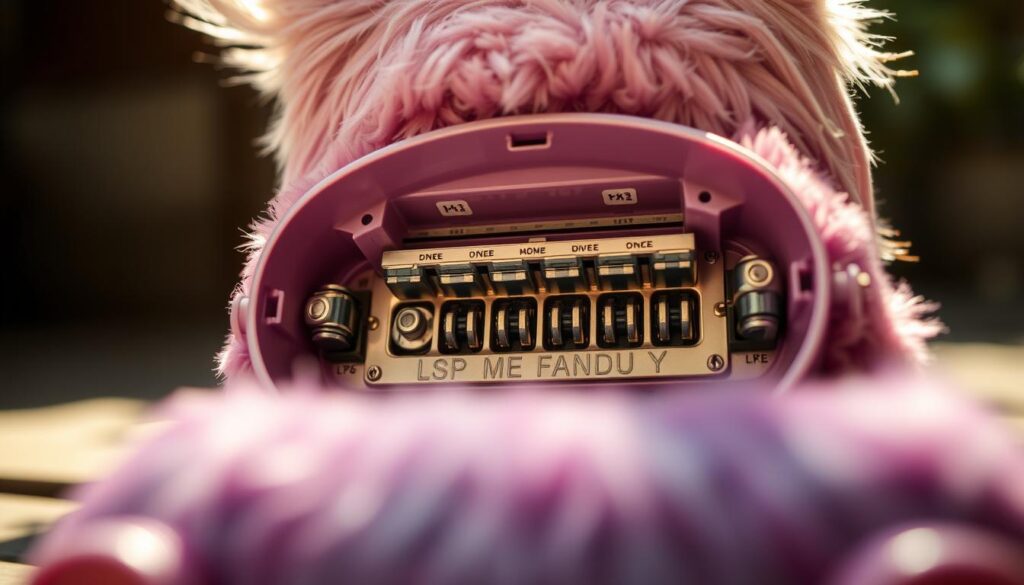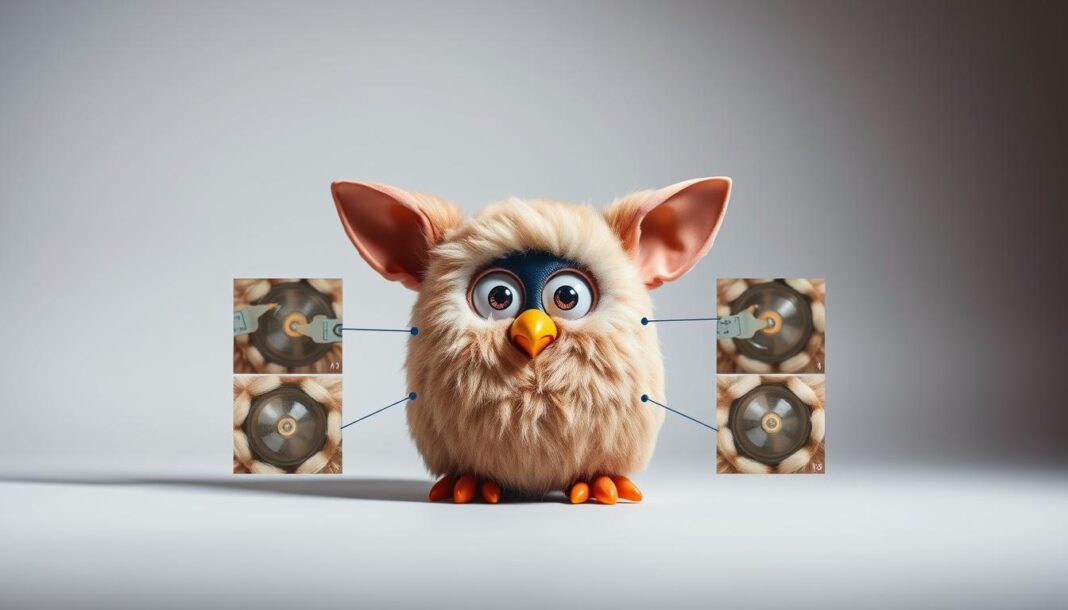Welcome to our comprehensive guide on bringing your Furby back to life! We’ve all been there – excited to play with our Furby, only to find it won’t turn on. It’s frustrating, but don’t worry, we’ve got you covered.
In this article, we’ll walk you through the simple steps to activate your Furby, covering different models and their specific battery requirements. For instance, some Furbies run on four AA batteries, while others may need a different setup. You can find more details on the specific needs of your Furby model on our partner’s guide on how to turn Furby on.
By the end of this guide, you’ll know exactly how to turn on your Furby and get it up and running in no time. We’ll also touch on troubleshooting common issues, like dead batteries or corrosion on battery contacts, to ensure you’re back to enjoying quality time with your Furby.
Understanding Your Furby
The first step in troubleshooting or simply enjoying your Furby is to comprehend its fundamental nature. Understanding your Furby is crucial for a delightful experience with this interactive electronic pet.
What is a Furby?
Furbys are interactive electronic pets that were first introduced in 1998 and have gone through several generations of development over time. They are designed with sophisticated mechanics that allow them to move, speak, and respond to their environment.
How Furbys Work
These lovable creatures use a single motor system to power all their actions. The motor, similar to those found in old Stompers 4×4 vehicles, is located in the front behind the left cover. It drives a series of gears and cams to create various movements and expressions.
Common Reasons Why Furbys Won’t Turn On
Common issues include depleted batteries, improper placement of batteries, internal misalignment after long storage periods, or the need for a simple reset. Ensuring your Furby has fresh batteries correctly placed can often resolve the issue. If your Furby remains unresponsive, it might be worth checking if it needs a reset or if there’s an issue that requires more time to diagnose.
For more detailed troubleshooting, including how to properly maintain your Furby, it’s helpful to understand its internal mechanics and how they contribute to its overall functionality. You can find more information on managing your Furby’s power state in our guide on how to turn Furby off without any.
| Characteristics | Description | Common Issues |
|---|---|---|
| Interactive Electronic Pet | Moves, speaks, and responds to environment | Depleted Batteries |
| Single Motor System | Drives various movements and expressions | Improper Battery Placement |
| Sophisticated Mechanics | Allows for interactive behavior | Internal Misalignment |
How to Turn On Furby: Basic Method
The first step in enjoying your Furby’s interactive features is learning how to turn it on properly. To do this, you’ll need to follow a few simple steps that ensure your Furby is powered on and ready to interact.
Checking Battery Compartment
Begin by checking the battery compartment, located on the bottom of your Furby and secured with a small Phillips-head screw. Make sure there’s no fur or debris interfering with the connections, as this is a common issue that prevents proper battery contact. Remove the battery cover and inspect the area to ensure it’s clean and free of obstructions.
Installing Fresh Batteries
Next, install fresh, high-quality AA batteries to power your Furby. We recommend using name-brand alkaline batteries for optimal performance. Proper battery placement is crucial, so ensure you’re following the polarity indicators (+ and -) inside the compartment when installing the batteries.
Performing a Simple Reset
If fresh batteries don’t wake your Furby, performing a simple reset is your next step. For newer Furby models, this involves turning Furby upside down and holding both the mouth and heart gem simultaneously for over 5 seconds until you see the ears flash red and hear a confirmation beep. Note that a full reset will return your Furby to its factory settings, so it may lose any “training” or personality development. For more information on managing your Furby’s settings, you can refer to our guide on how to turn off a Furby.

Troubleshooting a Non-Responsive Furby
If your Furby is not turning on, it’s likely due to a simple issue that can be resolved with some basic troubleshooting. A Furby that has been stored for an extended period might enter a “comatose” state, requiring manual intervention to revive it.
Identifying a “Comatose” Furby
A “comatose” Furby can be identified by its position – instead of leaning forward in a sleep position, it will sit flat on the table with a dazed expression and an unextended base. This is a clear indication that your Furby needs some attention.
Preparing for Disassembly
Before attempting any internal repairs, it’s essential to gather the necessary tools and take safety precautions. You’ll need a small Phillips screwdriver, a flat-head screwdriver, an X-Acto knife, a sewing needle with matching thread, and a hot glue gun for reassembly.
Required Tools
The tools required for disassembling and reassembling your Furby include a small Phillips screwdriver, a flat-head screwdriver, an X-Acto knife, and a hot glue gun. Having these tools ready will make the process smoother.
Safety Precautions
Safety is paramount when working with electronic toys. Always remove the batteries before disassembly and work on a clean, well-lit surface where small parts won’t get lost.
Removing Furby’s Fur and Faceplate
The disassembly process begins with carefully cutting the stitches that attach Furby’s fur to the skeleton. Use a sharp hobby knife like an X-Acto #11 to cut these stitches, making sure to preserve the thread pattern for later reassembly.
Loosening the Ears
To loosen the ears, cut the stitches that attach them to the skeleton. This will give you better access to the internal components.
Removing the Zip Tie
Furby’s fur is held on with a plastic zip tie sewn into the cloth. Use a small flat screwdriver to lift the back side of the zip tie up and over the lip on Furby’s base without damaging it.
Detaching the Faceplate
Once the fur is loosened, carefully remove the faceplate, which is typically held on with hot glue. Be mindful not to damage the optical sensor lens above Furby’s eyes.
Accessing and Restarting the Internal Mechanism
After removing the four screws on Furby’s right side, you’ll need to gently detach the microphone from the cover and set aside the back rub actuator to access the internal mechanism.
Opening the Side Covers
Use a small Phillips screwdriver to remove the screws holding Furby’s right side on. This will give you access to the internal gears and mechanism.
Locating the Reset Gear
The key to restarting a comatose Furby is locating the horizontal gear (often black) and carefully turning it to the right until the cam on the back gear points downward.
Manual Restart Procedure
As you turn the gear, you’ll notice a pulsating response from the motor. Continue turning until the motor fully activates and Furby goes through its reset motions.
| Step | Description |
|---|---|
| 1 | Remove the batteries and disassemble Furby |
| 2 | Locate the horizontal gear and turn it to the right |
| 3 | Continue turning until the motor fully activates |
Reassembling Your Furby
Reassembly requires careful attention to detail. Reattach the faceplate with small beads of hot glue, ensuring no glue gets into moving parts or fur.
Reattaching the Faceplate
Use hot glue to reattach the faceplate, being cautious not to damage any internal components.
Replacing the Fur
When replacing the fur, make sure to hook it back under the ear slots and carefully resecure the zip tie in its groove without twisting the fur.
Sewing the Ears Back On
Sew the ears back onto the skeleton using the preserved thread pattern to maintain the original appearance.
For more information on Furby’s original design and functionality, you can visit this page to understand the intricacies of this electronic companion.
Keeping Your Furby Active and Healthy
After troubleshooting and turning on your Furby, the next step is to keep it active and healthy. To achieve this, regular interaction is crucial, as these interactive toys are designed to “learn” and develop their personality through consistent engagement.
To maintain your Furby’s health, store it in an upright position when not in use, and remove the batteries if you plan to store it for an extended period of time. Regular maintenance, such as keeping the battery contacts clean and checking for loose fur, is also essential.
For more information on getting the most out of your Furby, including understanding its commands, visit our guide on unlocking your Furby’s full potential. By following these tips and keeping your Furby in a moderate place with fresh batteries, you can enjoy your interactive toy for a long time.


